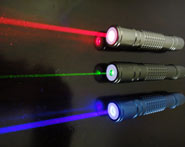


 الفيزياء الكلاسيكية
الفيزياء الكلاسيكية
 الكهربائية والمغناطيسية
الكهربائية والمغناطيسية
 علم البصريات
علم البصريات
 الفيزياء الحديثة
الفيزياء الحديثة
 النظرية النسبية
النظرية النسبية
 الفيزياء النووية
الفيزياء النووية
 فيزياء الحالة الصلبة
فيزياء الحالة الصلبة
 الليزر
الليزر
 علم الفلك
علم الفلك
 المجموعة الشمسية
المجموعة الشمسية
 الطاقة البديلة
الطاقة البديلة
 الفيزياء والعلوم الأخرى
الفيزياء والعلوم الأخرى
 مواضيع عامة في الفيزياء
مواضيع عامة في الفيزياء|
Read More
Date: 5-11-2020
Date: 10-10-2020
Date: 1-11-2020
|
INDUCTORS AND DC
Suppose that you have some wire that conducts electricity very well. If you wind a length of the wire into a coil and connect it to a source of dc, the wire draws a small amount of current at first, but the current quickly becomes large, possibly blowing a fuse or overstressing a battery. It does not matter whether the wire is a single-turn loop, lying haphazardly on the floor, or wrapped around a stick. The current is large. In amperes, it is equal to I = E/R, where I is the current, E is the dc voltage, and R is the resistance of the wire (a low resistance).
You can make an electromagnet by passing dc through a coil wound around an iron rod. However, there is still a large, constant current in the coil. In a practical electromagnet, the coil heats up as energy is dissipated in the resistance of the wire; not all the electrical energy goes into the magnetic field. If the voltage of the battery or power supply is increased, the wire in the coil, iron core or not, gets hotter. Ultimately, if the supply can deliver the necessary current, the wire will melt.



|
|
|
|
التوتر والسرطان.. علماء يحذرون من "صلة خطيرة"
|
|
|
|
|
|
|
مرآة السيارة: مدى دقة عكسها للصورة الصحيحة
|
|
|
|
|
|
|
نحو شراكة وطنية متكاملة.. الأمين العام للعتبة الحسينية يبحث مع وكيل وزارة الخارجية آفاق التعاون المؤسسي
|
|
|